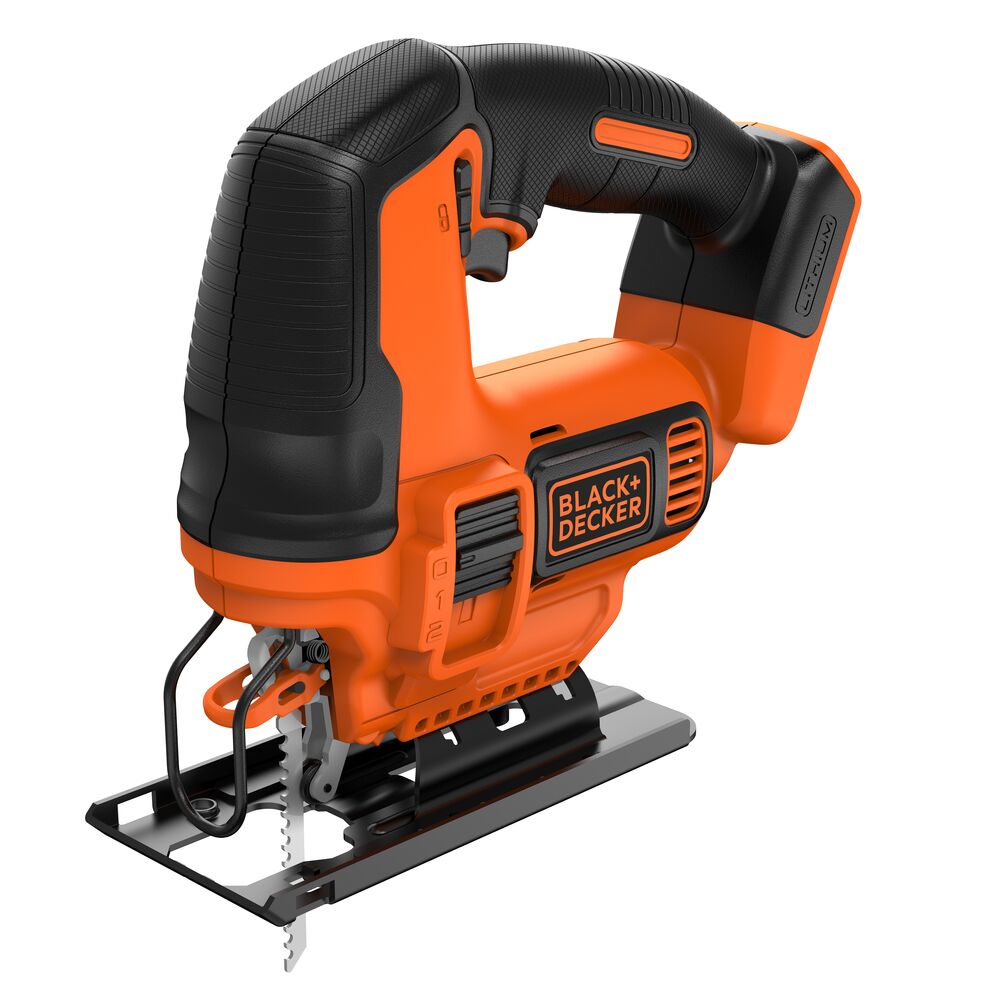Quirky Shelving
Skill Level: Intermediate
Shelving that stands as a centre piece. Add some personality into your living room, with these quirky shelves.
Follow the step by step guide, on how you can create the centre piece shelving.
Products You Will Need
Step by Step Instructions
Step 1. Cut the Shelf Parts
Firstly you need to cut your top, bottom and side panels to width. We are using 12mm Birch Ply. Separately on 4 pieces of Birch Ply: Make a few marks at 15cm, draw a straight line between these marks to cut along.
Step 2. Sawing Shelf
Using a BLACK+DECKER® Jigsaw (or BLACK+DECKER circular saw if you have one) cut along the straight line. This will give a piece of panel that is 15cm wide.
Step 3. Cut it to length
Make a mark at the desired length for the panel that you are cutting. This is a side panel for one of the square boxes.



Step 4. Ensure shelf is cut square
Using a carpenters square draw a line all the way across at the mark you just made.
Cut along the line with your Jigsaw
Step 5. Mark Up Remaining Panels 1 and Panels 2
Measure up for the remaining side panels, tops and bottoms then back panels.
Use jigsaw to cut along marked up lines.
Step 6. Mark up remaining panels 3
After marking the remaining Panels, Cut and Saw the shelfs



Step 7. Pilot Hole Panel 2
Drill pilot holes for the screws. Use a 3-4mm wood or multi-use drill bit. As we are using 12mm ply, drill the hole 6mm in from the edge. Drill all the way through to the other panel. This will prevent the wood from splitting when you screw them together.
Step 8. Screwing Shelf 1 and 2
Using a 3.5 x 30mm screw, join the pieces together. Start by joining the side pieces to the back panel.
Step 9. Pilot Hole Panel 1
Drill pilot holes ready to join the sides pieces together.



Step 10. Making Shelf
Attaching the final side panel. Consider where you are putting the screws. As some of these will be visible when completed you may want to put them at the same place on each panel. 5cm in from the front and back edges for instance.
Screw them together.
Step 11. Sanding
Sand all joins and edges to even up and remove any saw and scorch marks. Gently sand all exposed corners to avoid potential splinters.
Step 12. Joining all the boxes together
When all your boxes are sanded join them all together. Lay them down on a flat surface, drill pilot holes, screw them all together ensuring each box as screwed to every adjoining box.



Step 13. Drill through the back of a few of the boxes
Drill holes (4mm) through the back of 2 or 3 of the upper boxes. Get someone to help you hold the whole unit in position. Use a spirit level to ensure the unit is straight. Mark the position of these holes on the wall behind. You can do this by gently drilling through the holes in the boxes until you just touch the wall behind leaving a mark.
Step 14. Drill Wall
Using a 6mm masonry drill bit, drill holes in the positions that you have just marked. Insert a red/6mm wall plug. Tap into place with a hammer. If attaching to plasterboard be sure to use the appropriate hollow wall fixings.


Step 15. Attach box unit to wall
Lift the unit back into position lining up the holes in the unit with the holes in the wall. Using 4 x 50mm screws, attach unit to the wall.
Step 16. Decorate shelves
You can decorate the back panels to some of the boxes to add colourful highlights. Use waterbased paint and wall paper or wrapping paper.


